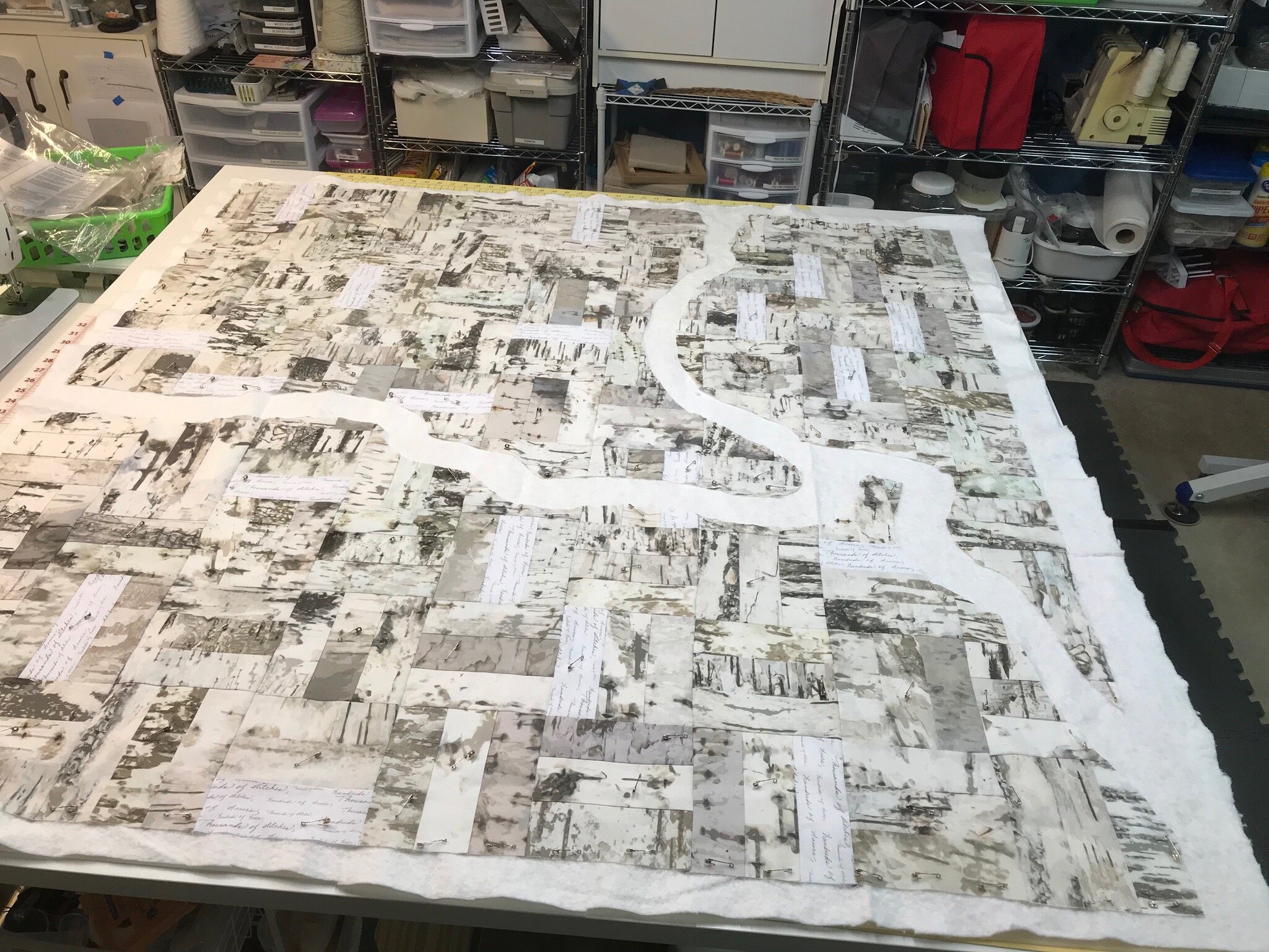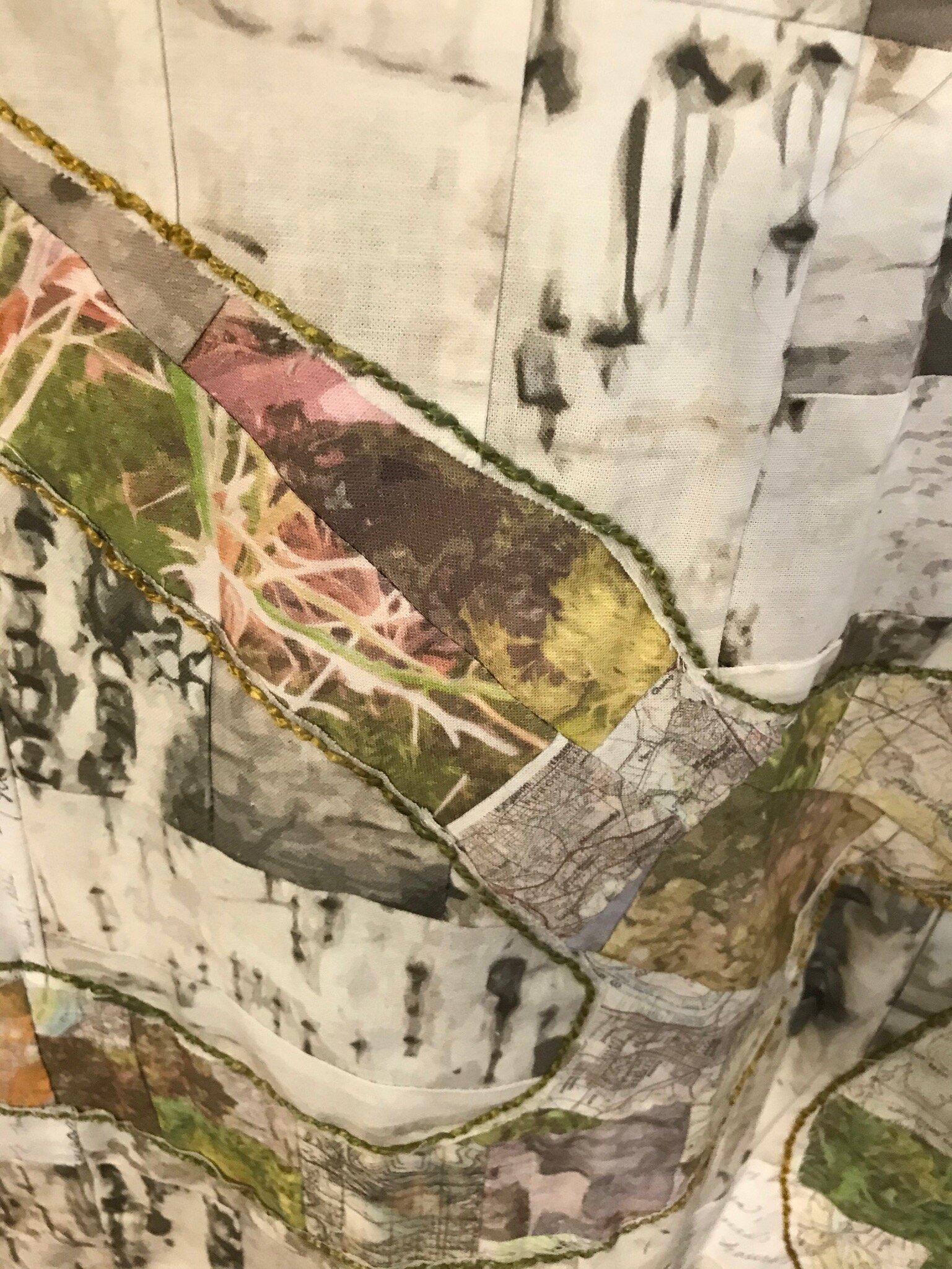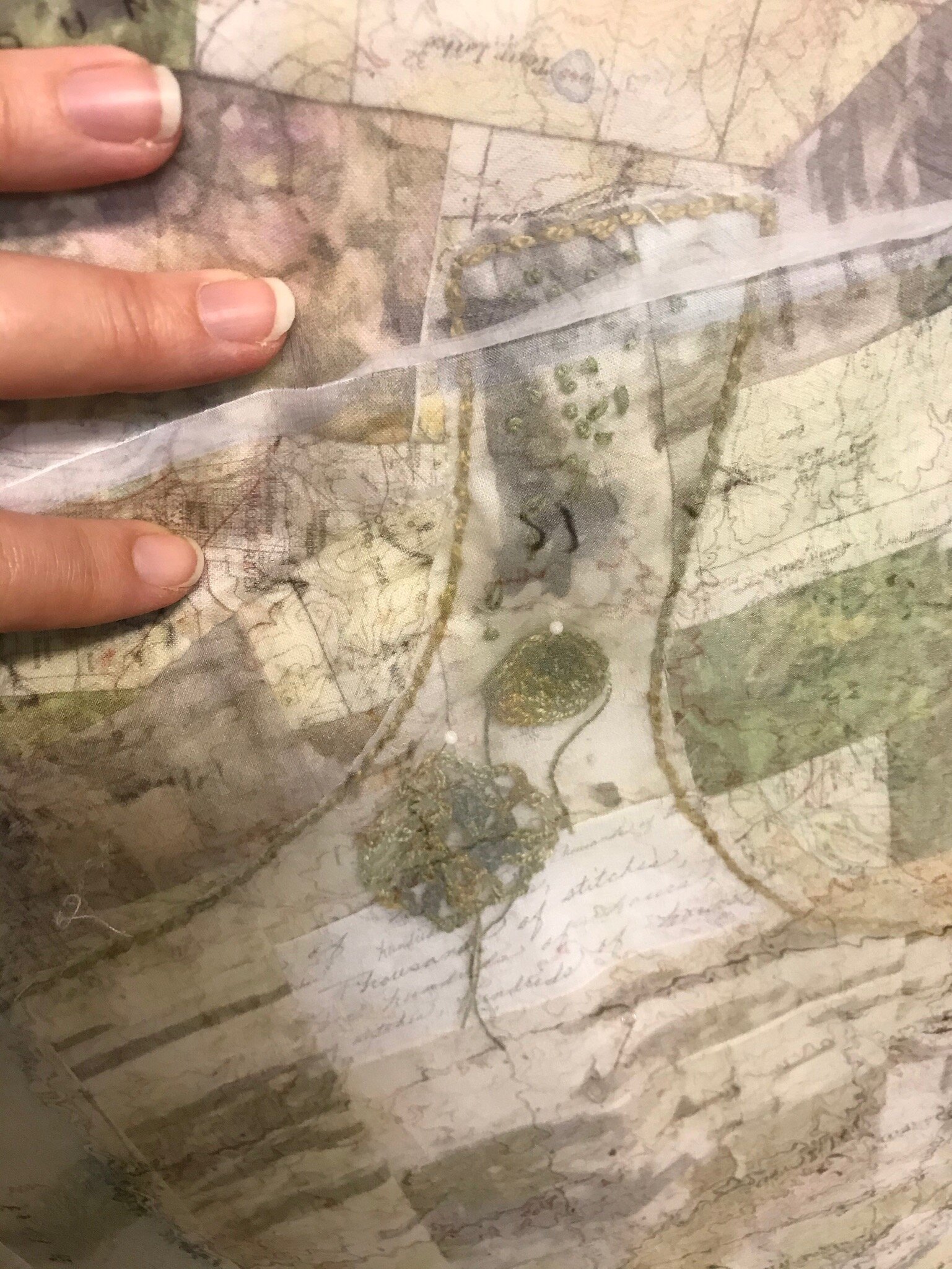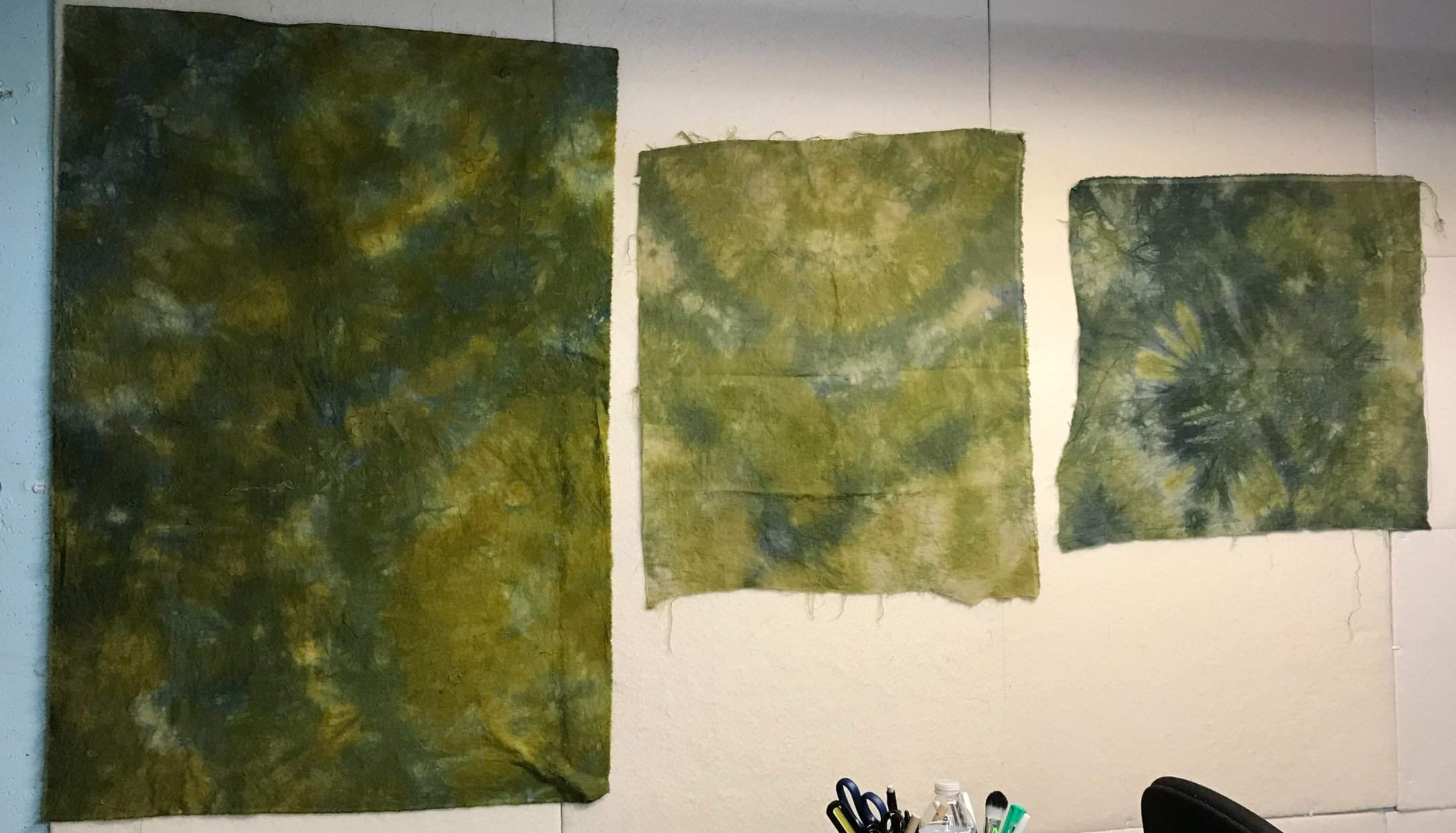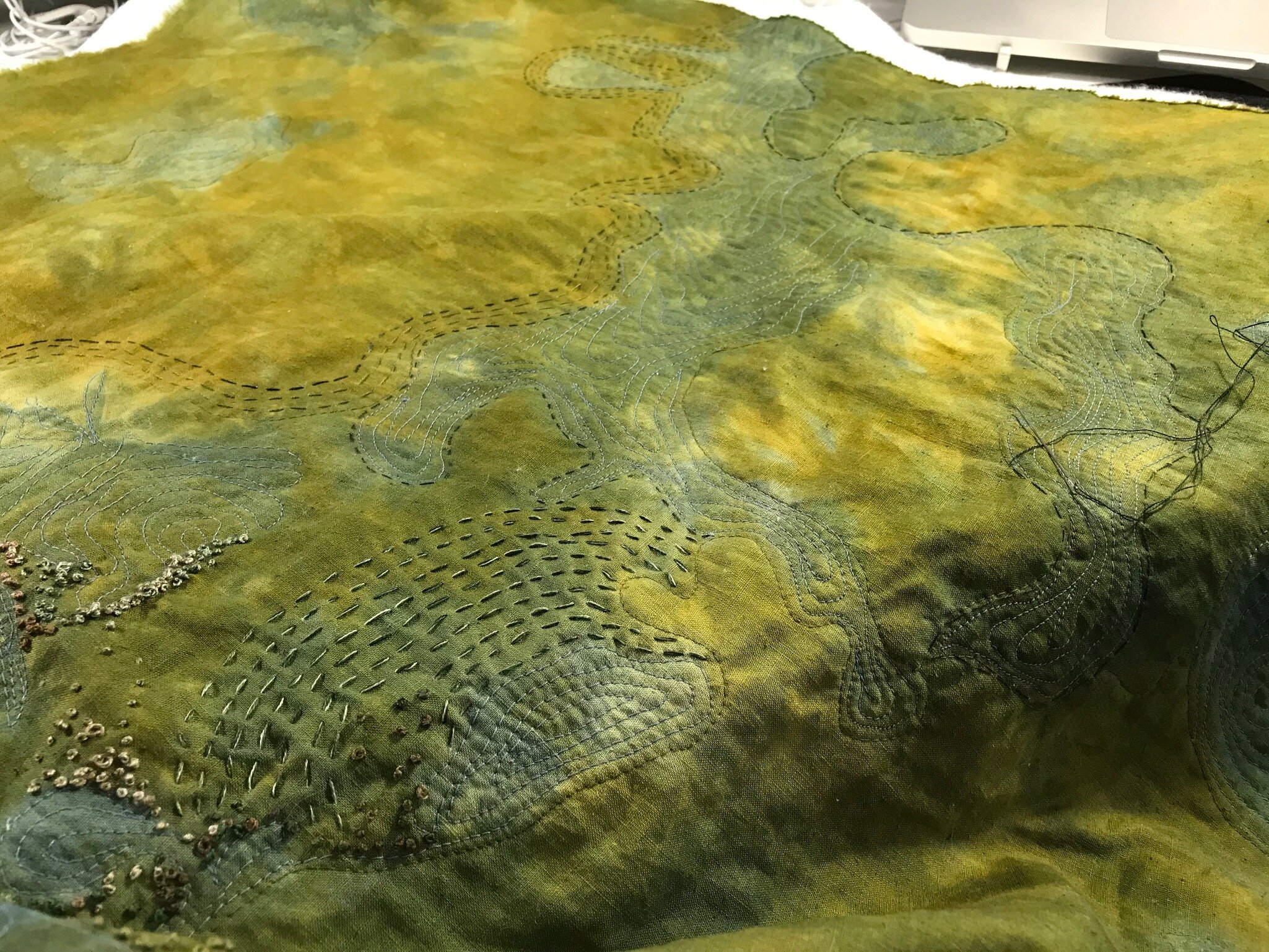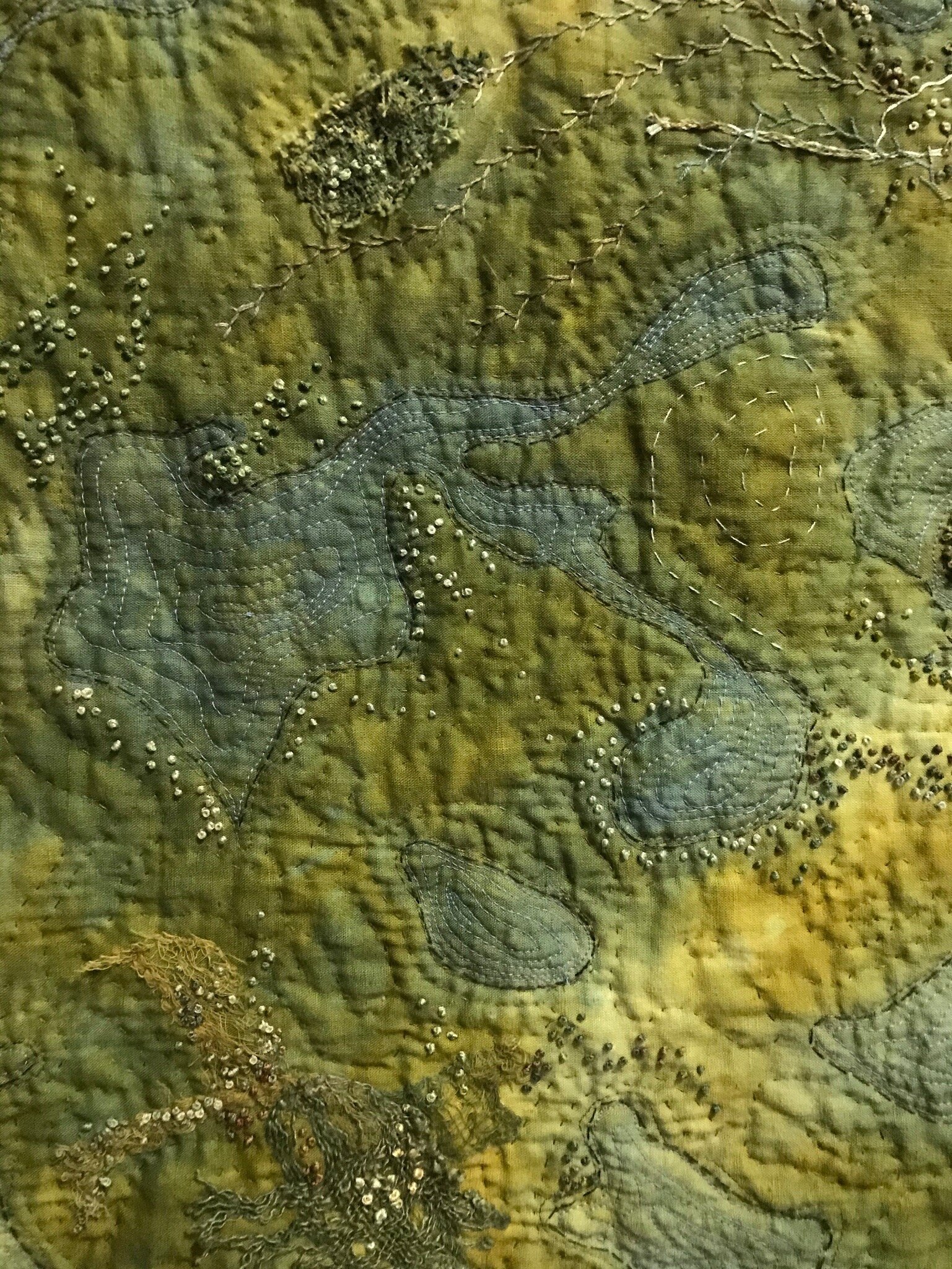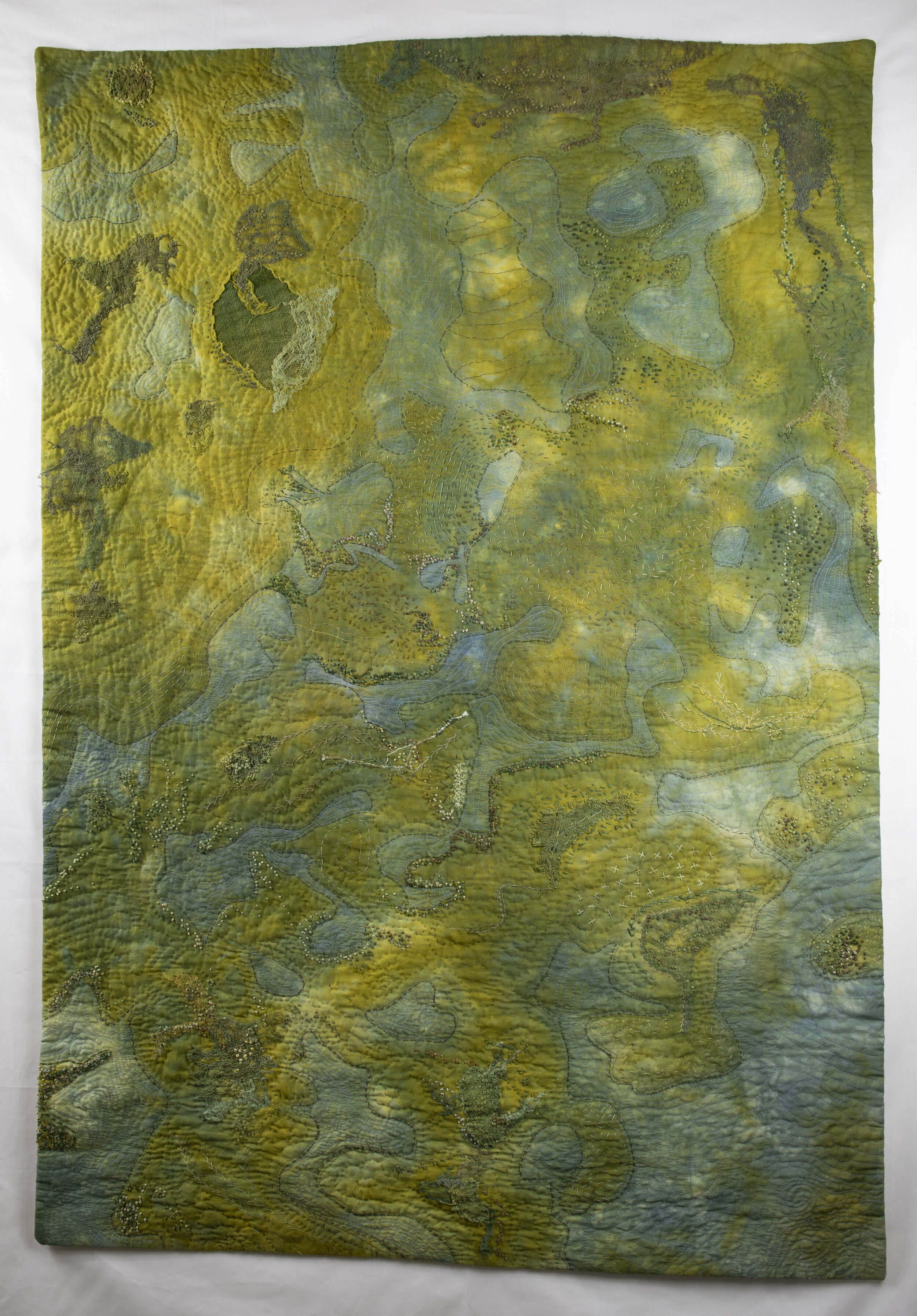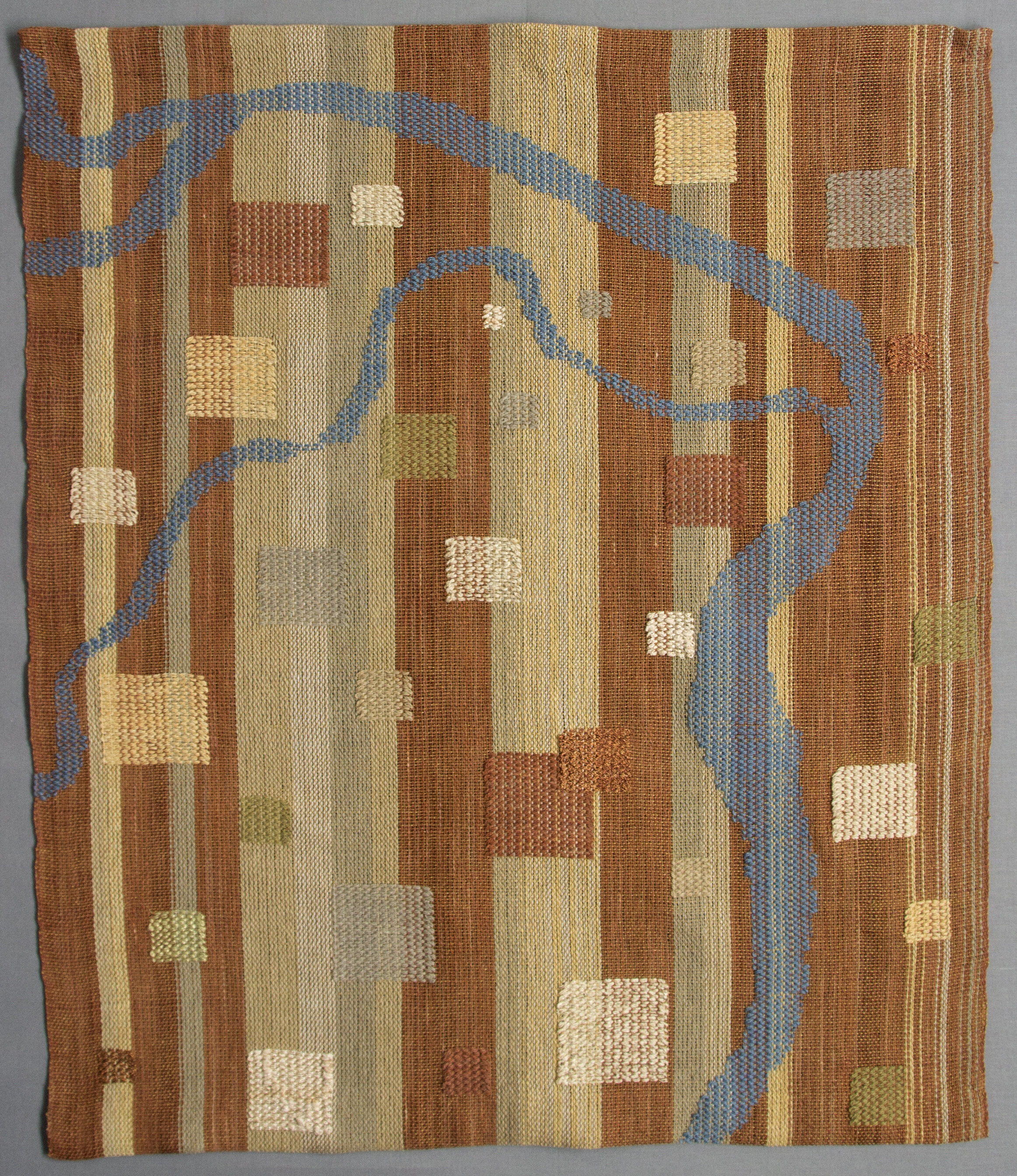I never felt connected with where I lived. I grew up in St. Louis but spent many summers and Christmas breaks shuffling to Arizona to stay with my mom. During that time, I learned to love the high desert of Arizona and felt very much at home. I had thought that I would move there after completing my undergraduate degree, but when my mom died suddenly that plan never was fleshed out. Going back and forth between vastly different landscapes was confusing. Coming home to Missouri, I always felt like I left something behind, and I was incomplete.
In 2014, I spent a week away to attend the Convergence weaving conference. On my flight home I looked out the window to see the Mississippi river below and felt an unexpected link to the familiar landscape – I was home. I made the woven piece Convergence 2014 to explore this new feeling. I designed the piece to pay homage to the hand towel, a functional object made by weavers. Like the quilt, a towel links to the home, women’s work and an object of intimacy to a family and family life.
The confluence of the Mississippi and Missouri Rivers was woven as the principle image. The background of the towel was a strong rusty orange to bring in the color of the Arizona landscape that I called home part time. The stripes in the towel were made in a natural dye and printing workshop at school.
This piece was a turning point, I hadn’t really made anything really this conceptual. It was the first time that I began to explore home, land and the ideas that would lead me into graduate school.
Convergence 2014
Woven Brocade - cotton, and rayon.
20” x 23 ½”
September 2014
I got the idea to revisit the confluence again in a quilt form earlier this year. I had some scraps of map fabrics from a quilt that I disassembled that had gone into several other works and I wanted to work with them again. I also had some blocks I made with birchbark fabric and my mother’s handwriting that I wanted to use. I had them up on my wall in my studio to think about them. I arranged them in a traditional quilt pattern called rail fence. I’ll admit that I fell down a rabbit hole trying to research the origin of the name, but I didn’t get very far. So much quilt knowledge is lore and subject to alterations and fancies of storytelling. It is hard to find solid research on quilts. Quilts still are not seen by many in academia and the art world as a legitimate subject to serious scholarly research or consideration (ugh the patriarchy with its art/craft divide). I’ve been assured this has changed by students and academics. I’m sure that I’m not alone in this, but I can cite my own experience in graduate school and entries into art shows as an indication that it has not. Anyway…. I began to think about rail fences as part of the content of this piece that I had begun thinking about and using it with the imagery of the confluence. Fences keep people and animals out or into a space.
The start of Migrations on the right. The beginnings of Koti on left.
The title for this quilt came right away – Migrations. I was thinking about the Mississippi flyway and the movement of birds from north and south. I’ve loved watching birds for as long as I can remember and living in a place of their migratory route seems especially significant. How do they know where to go? And why can’t people have the same understanding?
I was also thinking and reading about current migrations of people and the potential for more due to climate change. When I hear the stories and the voices of current immigrants and refugees, I can’t help but think about my own family. I wonder what I would do if I were forced to leave everything behind and run?
In the United States, we understand on a certain level that most of us are descended from immigrants, but we don’t really know what that means. My own family came from Sweden and Finland to the US. The Finns came after many years of famine, lack of work and land, and conscription into the Russian army. It wasn’t a good time back home. When they left, it was for good and there were loved ones they never heard from again.
My family has continued to move from here to there over the years. In contrast, I’ve lived in the Midwest my whole life with migrations a few times a year to Arizona to stay with my mom. I never thought that I would still be in St. Louis this long. I’ve thought we’d move several times over the last ten years, but here we are having made the choice to stay a few years ago despite a chance to move.
For so many people I’ve known it didn’t make much difference where they lived. I’ve always been hyper aware of it, perhaps by having two different places that my parents were based in. Where you lived seemed to matter. It could change your opportunities, your way of engaging in the resources around you and the people you encounter. If I had heard of cultural geography when I was first in school, I think I would have studied that subject. I ran across several talks during my research for this quilt and I wanted to go back to school (again).
TED Talk: What Do Landscapes Tell Us About Our Cultures?
The quilt was made with raw edge appliqué – meaning there was an exposed cut line of fabric that is left to fray. Let the fabric be fabric in this case. I marked out where I wanted to cut into the fabric to make the two rivers. I then put the fabric down on my worktable backed by quilt batting. From there I carefully cut away the marks. I next inserted the map scraps into the cut away areas.
The fabric with the river areas cut away exposing the quilt batting.
The map scraps of fabric inserted and pinned.
I pinned the heck out of it to stitch down the fabric with my sewing machine.
The making of the quilt posed several challenges.
The first challenge was the lack of visual definition between the birchbark and the map pieces. I needed something to define them more. After some trials, I finally settled on couching some hand dyed yarn to bring a bit more of an outline.
Areas of the rivers outlined in yarn.
I wanted to include embroidery to reference lichens and moss growing on birch bark when looking at the quilt close up. I also wanted to make a notation to landscape in a larger map form of the quilt viewed from afar.
This presented the next problem - embroidering through two to four layers of fabric and batting was terrible. I have flare-ups of carpel tunnel as well as other chronic pain and this was not making my body happy. I try to manage my pain and stitching through those layers just wasn’t smart. After thinking about it for a minute, I wondered if I could stitch out my areas on hand dyed silk organza fabric and then appliqué those to the quilt. It worked beautifully and has led to some other ideas that I’m planning on pursuing soon.
Embroidered pieces before cutting them apart
Stitching the embroidery to the quilt.
When I sketched and jotted down my initial plans for this work, I had planned on a top layer of silk organza printed with maps of places my family had lived, then pieced to make an overlay. It would be present, but not readily recognized. I did some samples to try to visualize this in the final form and it just didn’t work. The piecing was distracting to the overall view and it just didn’t seem to want to go. I hung a piece of the silk up on my wall so that I could think about it while I moved forward, but I was pretty sure that I was going to let it go.
Layering the silk over the top of the quilt.
When it came to the quilting this of piece, I had an idea that I wanted to hand quilt it very densely, but leave areas open in the shape of triangles. I was wanting to reference the flying geese motif in quilting to incorporate the migratory movement on the face of the quilt. I did a small sample and thought I was good to move forward.
In order to mark this quilt with triangles, I needed to use a method that took in account the printed nature of the fabric. The ink stays as long as you don’t wet your fabric. I used blue painters’ tape to cut triangles out. I could then arrange them how I wanted and then stitch around the triangles and remove the template.
Placing the first triangles.
When I moved to the larger quilt and stitched a few triangles and stepped back, I had a feeling that it was too subtle even if I went back in and densely stitched around them.
Stitched triangles
Then I saw the silk fabric maps hanging up and wondered if I cut them into triangles, I might get the subtle, map traces that I had originally wanted and solve my geese problem as well. I cut a few out and pinned them up to sample. I decided to leave the original outlines I had made in white as a mark of my hand and add an additional element.
Silk map triangles pinned down.
The triangles achieved the results that I was looking for. Some fade back into the fabric while others are more visible. I hope this push and pull will draw the viewer’s eye and bring them in closer.
The rest of the making went smoothy. Sometimes solving the problems presented by work is frustrating and sometimes it brings new discoveries. The things I learned and the thinking that went into this work rolled me into my next quilt where I’m talking about immigration and my experiences through my family more directly.
But that will be another story or blog post for the future.
Completed work
Migrations
50" h x 49.5" w
Machine pieced and appliquéd quilt with digitally printed photograph and handwritten text on cotton, digitally printed altered maps on silk and cotton, hand embroidery, and hand quilted
Cotton, linen and silk
STATEMENT:
I live near the confluence of the Missouri and Mississippi rivers which is found along Mississippi Flyway, a migration route for hundreds of species of birds. Unlike birds, people don’t always know how to find our way home. We migrate, carrying memories, and we add new layers to our stories. In my case, the layers are composed of altered maps for the places my family has lived, printed birchbark fabric – my ancestral family tree from Finland – and my mother’s words, “Thousands of stitches and hundreds of hours,” a metaphor what it takes to make a quilt and a home.
Detail


